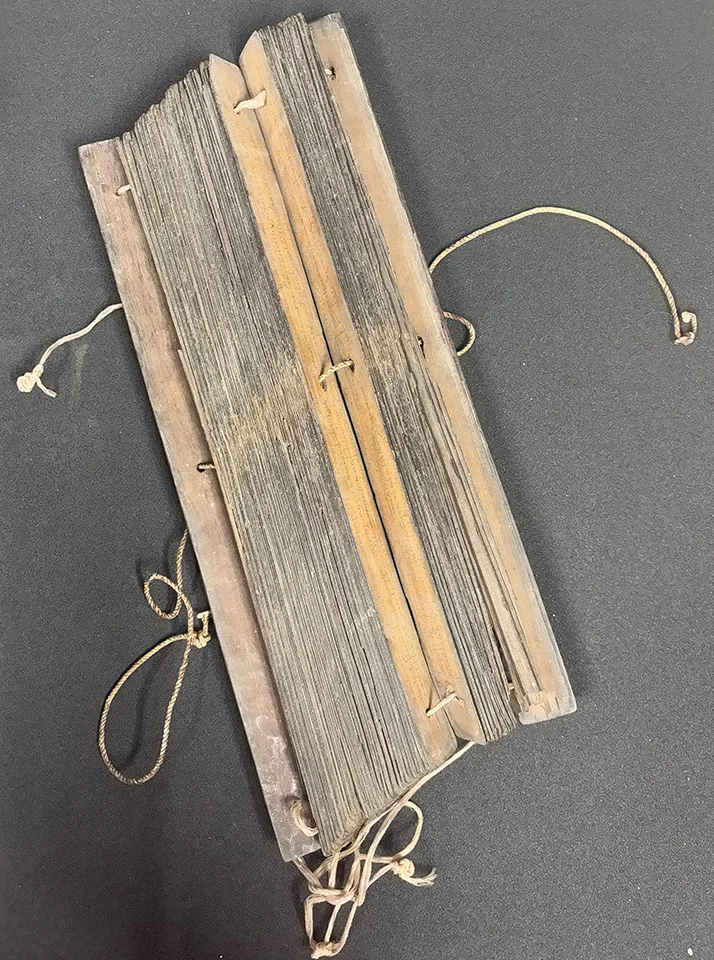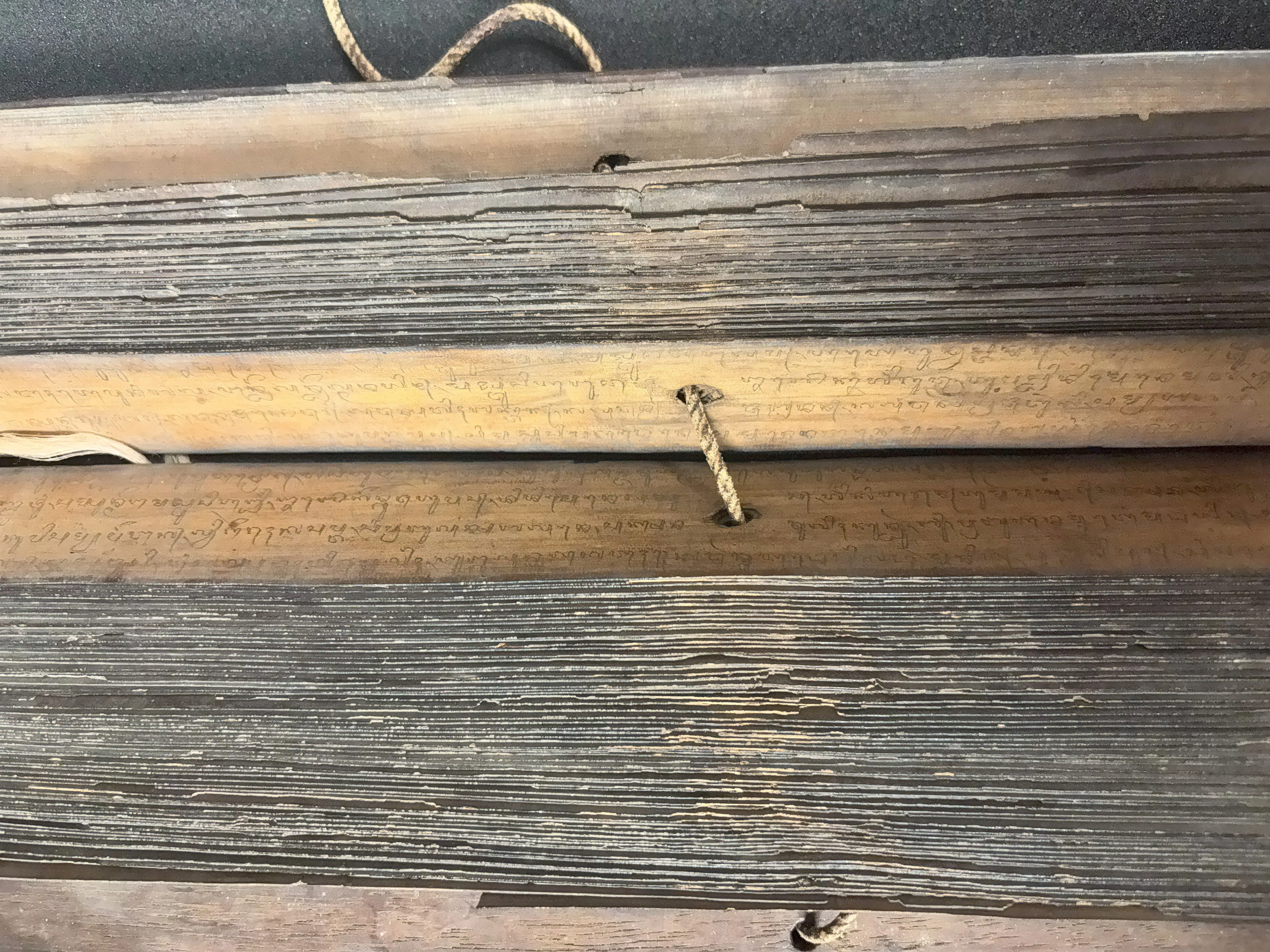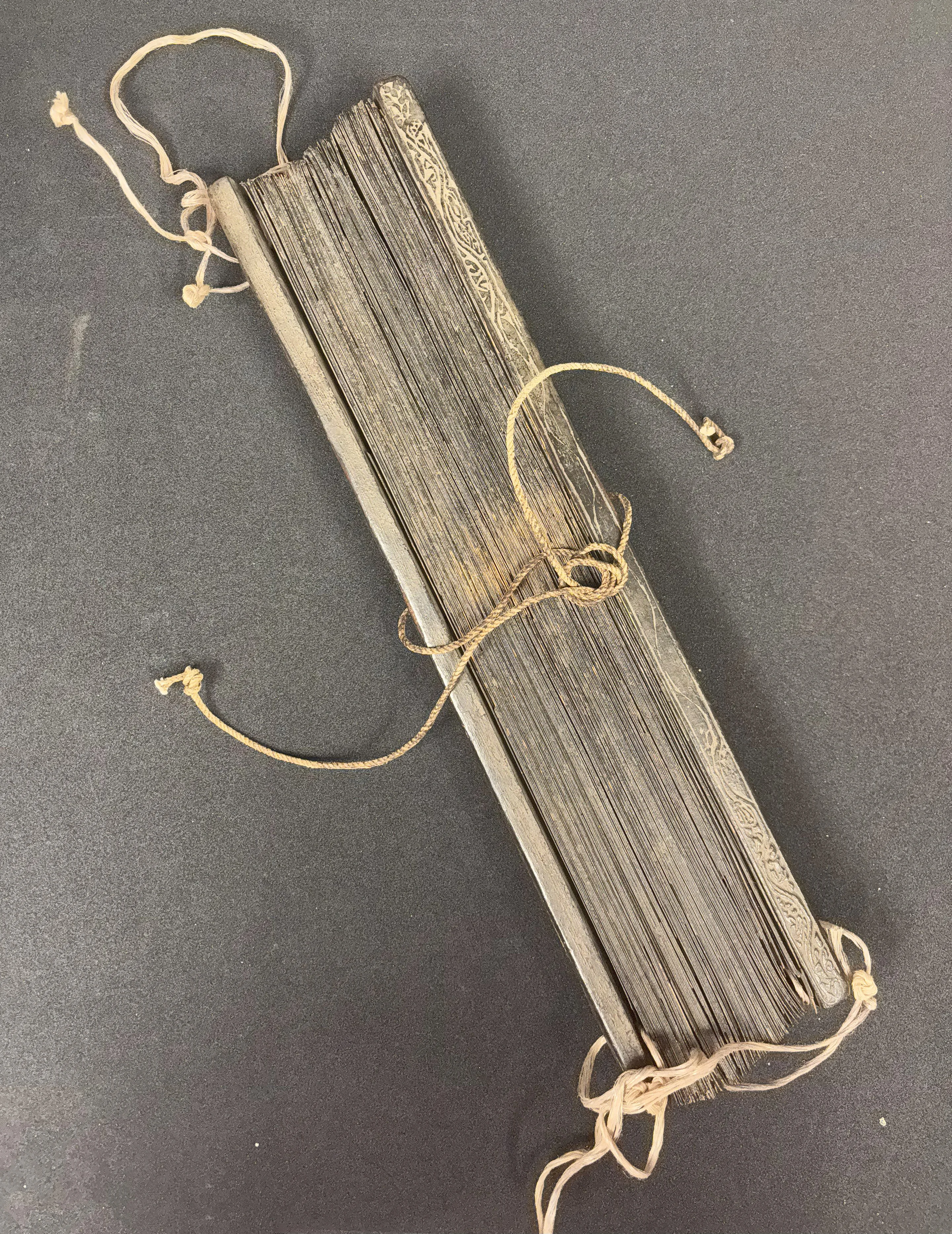 Photo. A Palm Leaf book c. 1750 from the Island of Lombock, Indonesia
Photo. A Palm Leaf book c. 1750 from the Island of Lombock, Indonesia
Palm leaves were used as writing paper for thousands of years. The practice continued in parts of Asia well into the nineteenth century. This type of book is thought to have originated in India where it then migrated across Asia, with most surviving examples coming out of Southeast Asia.
 Photo. Palm Leaf book
Photo. Palm Leaf book
The process for prepping Palmyra Palm leaves into book pages changes across cultures, but generally the first step is to divide each palm leaf in half by cutting out the rib that runs down the center. There are several ways to prepare the leaves: scraping, sanding, smoking, boiling and drying. To inscribe the writing, the leaves are held in one hand and scored from left to right by using a sharp stylus that cuts into the surface of the leaf. This is effective for longevity but isn’t easy to see, so the writing is made clearer by rubbing the leaf with soot or ink, then wiped clean. The dark pigment remains in the writing grooves, easily viewable and usable. Some books are decorated with illustrations and gilding, but Samford’s example does not include these types of decoration. The inscribed leaves are then made into "books" by scoring holes through the centers and/or ends of each leaf and stringing them together. The books are protected with covers made of wood panels, as seen on our book, or other hard materials like ivory. Because the hot and humid conditions of Southeast Asia promote decay, books older than 200 years are a rare commodity. Samford’s Special Collection is very lucky to have such a well-preserved example. In fact, it was common practice to copy the manuscripts to new palm leaf books as the old ones began deteriorating and disintegrating. This practice only came to an end in the 19th century with the introduction of industrial printing presses.
 Photo. Closeup
Photo. Closeup
The Palm Leaf Book in Samford’s Special Collection comes from the Island of Lombok in Indonesia and dates to approximately 1750. Though many examples of Palm Leaf Books contain Buddhist religious texts, this book was written in Kawi Sanskrit and contains epics of Balinese history and legends. This book was graciously given to Samford Special Collections by Davis A. Lockmiller, Law Class of 1929.
 Photo. Palm Leaf book
Photo. Palm Leaf book
Resources
- A Palm Leaf book c. 1750 from the Island of Lombock, Indonesia. Samford University Special Collection, SCAV 2135
- Close, Max. “Burmese Palm Leaf Manuscripts.” Burmese Palm Leaf Manuscripts | Special Collections Spotlight | Collection Essays | Robert D. Farber University Archives and Special Collections | Brandeis University, June 1, 2016. https://www.brandeis.edu/library/archives/essays/special-collections/burmese-texts.html.
- “Palm Leaf Manuscript.” Chetham’s Library. Accessed January 30, 2025. https://library.chethams.com/collections/101-treasures-of-chethams/palm-leaf-manuscript/.
- Ross, Diane DeCesare. “Palm Leaf Manuscript.” University of Southern Mississippi. Accessed January 30, 2025. https://www.lib.usm.edu/spcol/exhibitions/item_of_the_month/iotm_nov_08.html.


